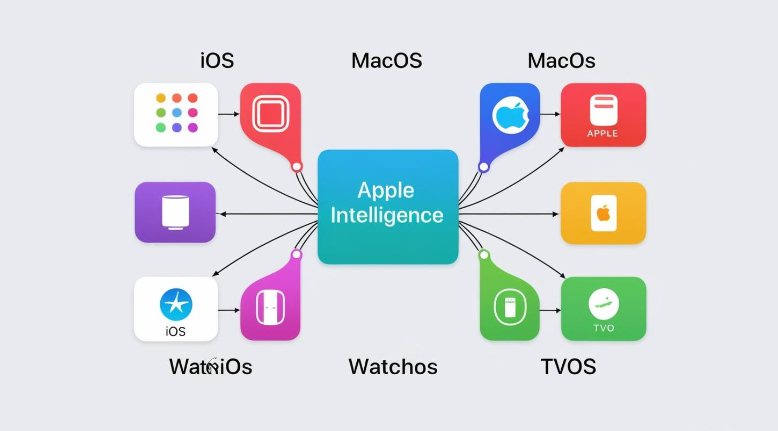Introduction
In the ever-evolving world of technology, artificial intelligence (AI) has become a cornerstone of innovation. Apple, a company renowned for its cutting-edge products and user-centric design, has been quietly building a robust AI ecosystem known as Apple Intelligence. This ecosystem powers many of the features we love on our iPhones, iPads, Macs, and other Apple devices. From Siri’s voice recognition to the advanced machine learning capabilities in the Camera app, Apple Intelligence is seamlessly integrated into every aspect of the Apple experience. In this comprehensive blog post, we’ll explore everything you need to know about Apple Intelligence, including its key features, how it works, and why it matters. Let’s dive in!
1. What is Apple Intelligence?
Apple Intelligence refers to the suite of AI and machine learning technologies that Apple uses to enhance its products and services. Unlike other tech giants that often tout their AI advancements, Apple takes a more subtle approach, embedding AI into its devices in ways that feel natural and intuitive. The goal of Apple Intelligence is to make technology more personal, private, and powerful.
- On-Device Processing: One of the hallmarks of Apple Intelligence is its focus on on-device processing. This means that most AI computations happen directly on your iPhone, iPad, or Mac, rather than relying on cloud servers. This approach ensures faster performance, enhanced privacy, and offline functionality.
- Seamless Integration: Apple Intelligence is deeply integrated into the operating system, making it invisible to the user. Whether you’re using Siri, taking a photo, or typing a message, AI is working behind the scenes to improve your experience.

2. Key Features of Apple Intelligence
Apple Intelligence powers a wide range of features across Apple’s ecosystem. Here are some of the most notable ones:
a. Siri: Your Intelligent Assistant
Siri is perhaps the most visible manifestation of Apple Intelligence. Over the years, Siri has evolved from a simple voice assistant to a powerful AI-driven tool that can understand context, predict your needs, and perform complex tasks.
- Natural Language Processing: Siri uses advanced natural language processing (NLP) to understand and respond to your queries more accurately.
- Proactive Suggestions: Based on your usage patterns, Siri can suggest actions like setting reminders, sending messages, or playing your favorite playlist.
b. Camera and Photos
The Camera and Photos apps leverage Apple Intelligence to deliver stunning results. Features like Smart HDR, Night Mode, and Portrait Mode rely on machine learning to enhance your photos.
- Scene Recognition: The Camera app can recognize different scenes and adjust settings automatically for the best shot.
- Photo Curation: The Photos app uses AI to organize your photos into albums, highlight memorable moments, and even remove duplicates.
c. Face ID and Security
Face ID, Apple’s facial recognition technology, is powered by Apple Intelligence. It uses a neural engine to map your face and ensure secure authentication.
- Adaptive Learning: Face ID adapts to changes in your appearance, such as wearing glasses or growing a beard.
- Privacy-First: All facial data is stored securely on your device and never shared with Apple or third parties.

d. Health and Fitness
Apple Intelligence plays a crucial role in the Health app, providing insights into your fitness and well-being.
- Activity Tracking: The Apple Watch uses AI to track your workouts, monitor your heart rate, and even detect falls.
- Health Predictions: Machine learning algorithms analyze your health data to provide personalized recommendations and alerts.
3. How Apple Intelligence Works
Apple Intelligence is built on a foundation of machine learning models and neural networks. Here’s a closer look at how it works:
a. Neural Engine
The Neural Engine is a dedicated component in Apple’s A-series and M-series chips designed to accelerate machine learning tasks. It enables real-time processing of AI algorithms, making features like Face ID and Siri possible.
- Efficiency: The Neural Engine is optimized for performance and power efficiency, ensuring that AI features don’t drain your battery.
- Scalability: It can handle everything from simple tasks like photo tagging to complex tasks like real-time language translation.
b. Core ML
Core ML is Apple’s machine learning framework that allows developers to integrate AI into their apps. It supports a wide range of models, including image recognition, natural language processing, and recommendation systems.
- Ease of Use: Core ML simplifies the process of adding AI features to apps, making it accessible to developers of all skill levels.
- On-Device Learning: Apps built with Core ML can perform AI tasks directly on the device, ensuring privacy and speed.
c. Privacy-Preserving AI
Apple is committed to protecting user privacy, and this extends to its AI technologies. Features like Differential Privacy and On-Device Processing ensure that your data remains secure.
- Differential Privacy: This technique allows Apple to collect aggregate data without identifying individual users.
- Data Minimization: Apple only collects the data necessary to improve its services, and it’s often anonymized.
4. Why Apple Intelligence Matters
Apple Intelligence is more than just a collection of features—it’s a reflection of Apple’s vision for the future of technology. Here’s why it matters:
a. Personalization
Apple Intelligence makes your devices more personal by learning your habits and preferences. This creates a tailored experience that feels uniquely yours.
b. Privacy
By prioritizing on-device processing and data minimization, Apple Intelligence sets a new standard for privacy in AI.
c. Innovation
Apple’s focus on seamless integration and user-friendly design ensures that AI enhances your experience without overwhelming you.
Conclusion
Apple Intelligence is the invisible force that powers many of the features we love on our Apple devices. From Siri’s conversational abilities to the Camera app’s stunning photo enhancements, AI is deeply embedded into the Apple ecosystem. By prioritizing privacy, personalization, and innovation, Apple has created an AI experience that feels natural and intuitive. As technology continues to evolve, Apple Intelligence will undoubtedly play a central role in shaping the future of how we interact with our devices. So, the next time you use your iPhone or Mac, take a moment to appreciate the incredible AI technology working behind the scenes to make your life easier and more enjoyable.